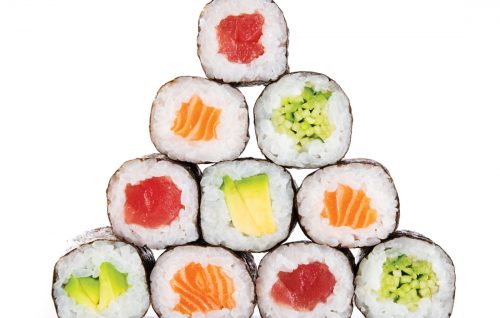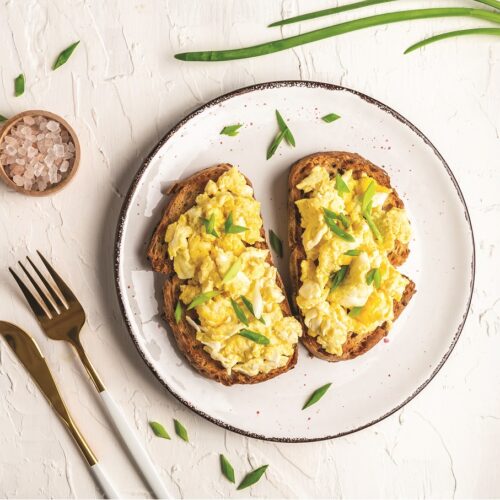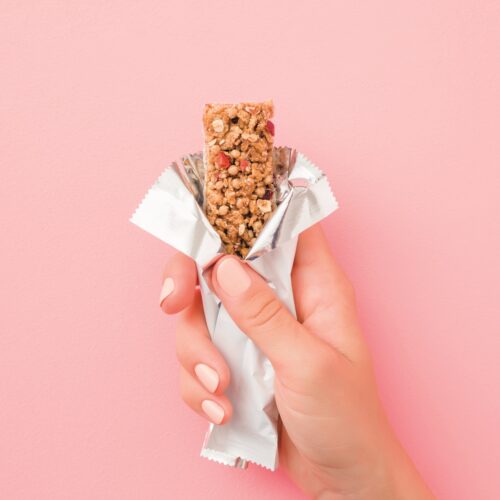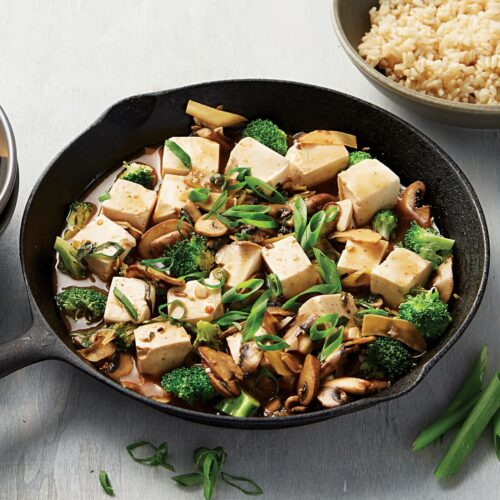
We explore the common nutrition traps to help you choose healthier takeaway sushi options.
While there are many types of sushi, it’s usually made from cold, cooked white rice mixed with sushi seasoning (vinegar) and wrapped in seaweed with a filling of small amounts of raw vegetables, raw or cooked fish, egg or chicken. Sushi is served with soy sauce, pickled ginger and the hot radish paste, wasabi.
The most common sushi choices in New Zealand are futomaki (fillings on the inside, rice around the edge, wrapped in seaweed), uramaki (inside out futomaki with the rice on the outside and seaweed on the inside) and nigiri sushi (shaped rice with fish on the top).
Sodium
Sodium is the most obvious trap that can turn your sushi from a great choice to a no-go zone. The sodium in a sushi meal usually comes from the sauces – teriyaki, mayonnaise or soy sauce – but is also high in smoked fish or eel, which are sometimes used as ingredients.
One tablespoon of soy sauce can contain 1055mg sodium.
To put that into context, the recommendations for long-term health are that adults aim for no more than 2000mg a day.
Too much sodium can increase blood pressure, putting you at higher risk of heart disease.
Add a miso soup to your order and you can add another 500mg sodium per serve.
Fat
Choosing a fried tempura prawn or gyoza, or mayonnaise-drizzled sushi means your fat intake has just shot up. While it’s likely to be a healthy polyunsaturated fat, too much fat adds excess energy, which may lead to weight gain over time. So we need to be aware of how often we’re choosing higher-fat foods.
Carbs
Cooked white rice is one of the staple ingredients of sushi. While having carbs at our meal helps fill us up, stops energy dips later in the day and gives us good food for our gut bacteria, brown rice is a better choice than white.
We tend to eat more rice than we think when we choose sushi.
Cold rice contains more resistant starch than hot rice but is still lower in fibre than brown rice. One small futomaki roll contains about 10g carbs.
How to avoid the nutrient traps in sushi
- Avoid the soy sauce or keep a small bottle of lower-sodium soy sauce at work
- Enjoy miso only occasionally
- Keep deep-fried choices infrequent
- Go for the brown rice option if you have the choice
- Choose more futomaki and less nigiri
- Keep an eye on how many sushi pieces you choose
- BYO salad or veges to increase the fibre content of your meal – and spend less on lunch
The impact that these choices have on your overall health will depend on how often you choose to eat sushi.
See these articles and recipes for sushi:
Article sources and references
- National Health and Medical Research Council and Ministry of Health. Nutrient Reference Values for Australia and New Zealand. Brief: Revised sodium nutrient reference values (2017), nrv.gov.auhttps://www.health.govt.nz/publication/nutrient-reference-values-australia-and-new-zealand
- Sonia S et al. 2015. Effect of cooling of cooked white rice on resistant starch content and glycemic response. Asia Pacific Journal of Clinical Nutrition 24:620-5https://www.ncbi.nlm.nih.gov/pubmed/26693746/
www.healthyfood.com










